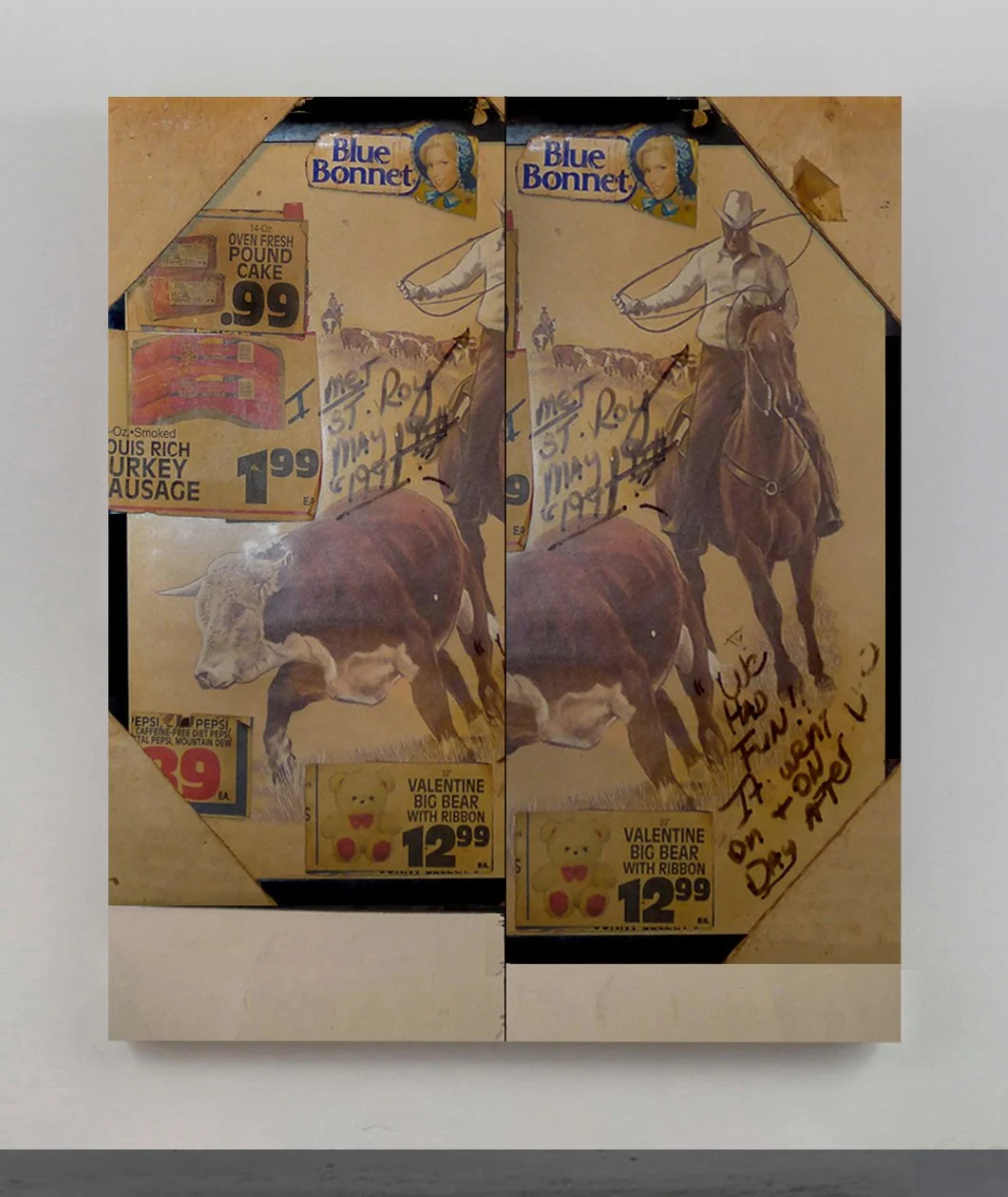Becky
2001Becky (2001 - 2013)
Mixed media
Opening Exhibition:
The Kitchen
New York, NY
Curated by Christina Yang and Annie Lanzilotto
March 8 - March 31, 2001
Curated by Gaia Serena Simionati
Florence, Italy
March 12 - May 19, 2013
About:
When I met Becky Silverstein she was crouched in front of the copy center next door to my favorite coffee shop. She was engaged in cutting and pasting fragments of what I would learn were her "prayers and explanations." Having walked over for a closer look, I noticed a tattoo running the length of her forearm; it spelled out SAINT in large black letters.
Following introductions, Becky handed me some pages. Each featured a dense tangle of handwriting in black "Sharpie" marker. As we conversed, I noticed that this handwriting also covered her purse, the rubber soles of her shoes, even the inner collar of her shirt.
One morning Becky presented me with a brown paper bag containing several hundred pages of her life story and a collection of prayers bound with electrical tape. She wondered if I might help her get it published. Since the work was prayerful, she explained, it simply "worked better" when more people read it. When I asked whether she had a particular publication in mind, she quickly responded, "TV Guide."
Soon after receiving her work, I left the country and it was a year before I reexamined the document. Impulse led me, aided by a magnifying glass and a ruler, to begin copying down strings of words. The text acquired a voice at once paranoid and hopeful, profoundly religious, yet saturated with popular culture--prayers for loved ones were followed with prayers for Captain Kirk. I decided to show the original document, along with my transcription, to a friend teaching American Studies at Harvard. When he asked to use it as the subject of an essay on religion, literature, and American culture, I told him I would look for Becky and see if I could obtain her permission.
Ultimately a line buried deep in her manuscript reconnected us: "my telephone number and address…." I dialed, Becky answered, and we agreed to meet for coffee. Soon after, Becky and the man she lived with invited me to dinner. Her studio apartment left me astonished. Every available surface was covered in text: the walls were papered with it, the furniture upholstered with it, the television, the vacuum cleaner, soup cans, and salt shakers were all crawling with language. Applied to doors and windows, the text warded off evil doers. Biblical chapters appeared on mundane objects to enhance functionality. Medicine bottles sported medicine prayers, soup cans, soup prayers.
This visit culminated in a friendship and, to date, a collaborative installation entitled "Becky" at The Kitchen (2002), featuring a simulation of Becky's apartment and a recording of Becky whispering her text. Institution and invitation comprised a great deal of how that came to be and was negotiated. The invitation from the curators at the Kitchen entailed an offer to extend and formalize a collaboration which Becky and I had already initiated. I, in turn, extended the invitation to Becky. My issues, pertaining to representation in a collaborative dialogue, became focused on her.
That first installation featuring a replica of Becky’s apartment (made along with her piece by piece) was disassembled (although some distinct portions of it remain). It is not likely to be repeated again.
New iterative work was shown at Galleria Poggialli e Forconi in Florence, Italy, in 2013. For that show, new objects were produced that utilized some of Becky’s essential tools and processes (such as: collage, repetition, and making copies of copies of copies), which were then re-applied to other media such as sculpture, film, video, and audio.
Becky died on April 14, 2011 in Los Angeles, CA.






























